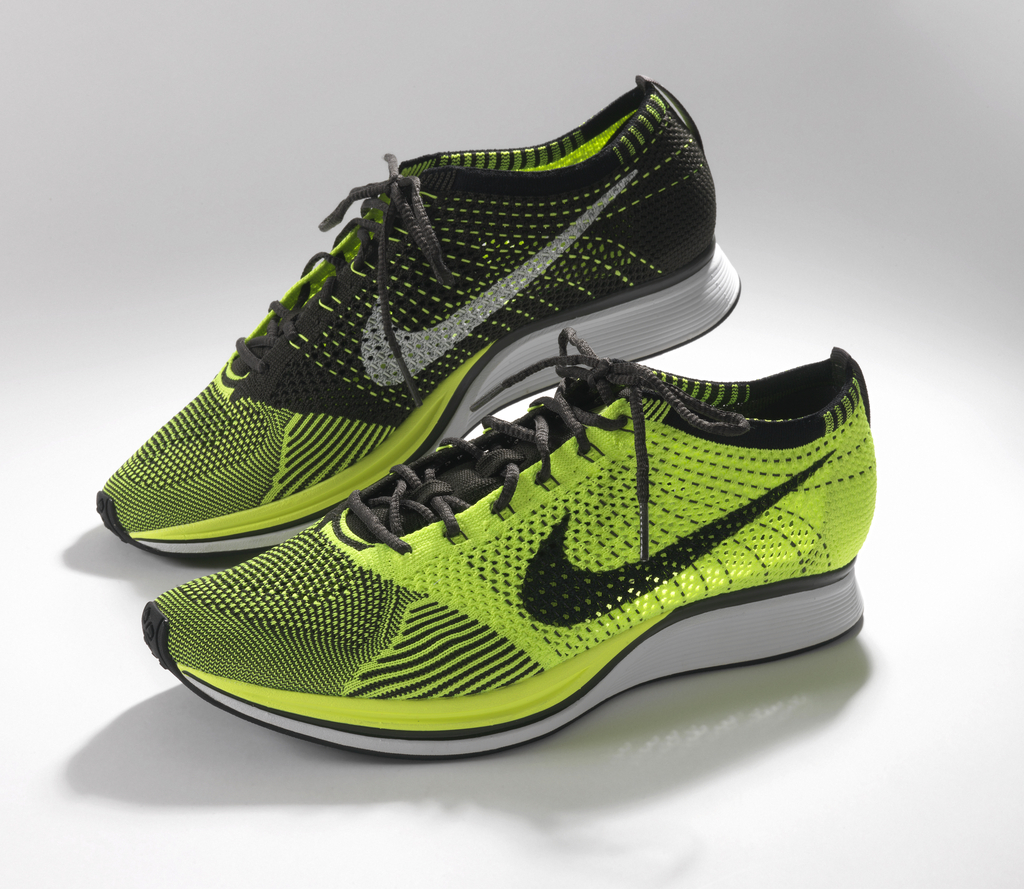Anyone who has scuffed their brand new sneakers can attest to the difficulty of keeping shoes in good condition. One of the best ways that Cooper Hewitt’s conservation department can ensure the preservation of the collection is through proper storage. Take for instance the recently acquired pair of Nike FlyKnit Racer shoes. While the sneakers are new, it is our responsibility to create storage that will support and protect in order to best slow deterioration and preserve their current state. The shoebox they came in doesn’t cut it–the brown cardboard box and tissue are acidic.
A custom box was built out of acid-free board, which creates a pH neutral barrier protecting the shoes from two of their biggest enemies, light and dust. The box front drops down, which allows an examiner to easily access the shoes by sliding out the support tray. The tray was built with cutout, graded depressions where the soles can rest, securing the shoe from sliding. Last is a layer of cotton stockinette with enough texture to prevent the shoes from shifting during transport.
Interior of shoe box with support tray. Photo courtesy of the author.
Their innovative knit design is the component that posed the biggest support challenge. The knitted structure allows the shoe to effectively mold to the wearer’s foot by flexing, stretching, and contracting with each movement of the runner. This flexibility means that the shoes have the possibility of stretching out or collapsing over time if improperly stored. Interior supports were made by sewing two muslin pillows stuffed with polyfill to fit the inner dimensions of the shoe. It’s a Goldilocks moment – if the supports are too small, the shoe can collapse over time because it’s unsupported; too big and the supports can stretch out the shoe.
Sewing an inner support pillow. Photo courtesy of Matilda McQuaid.


